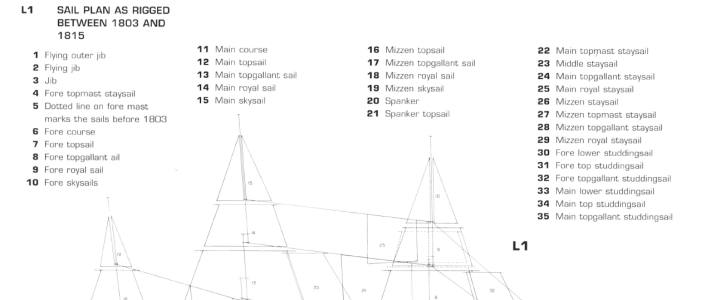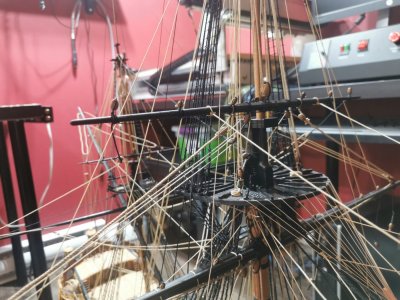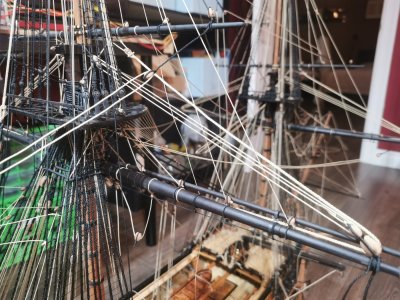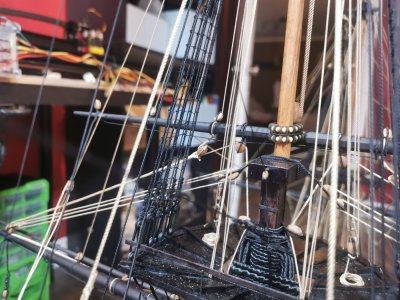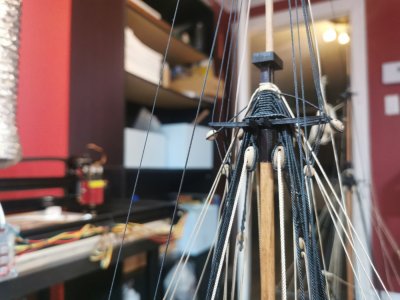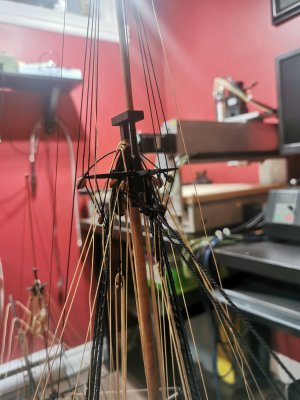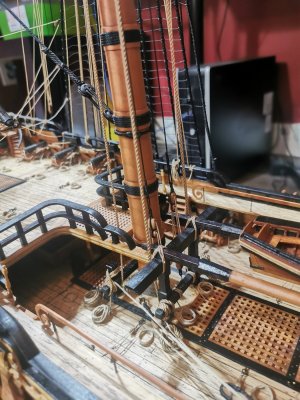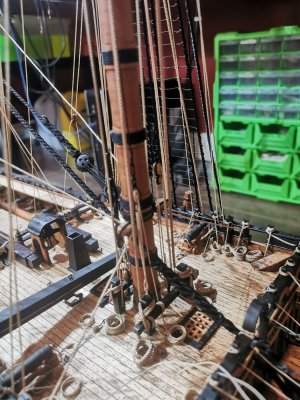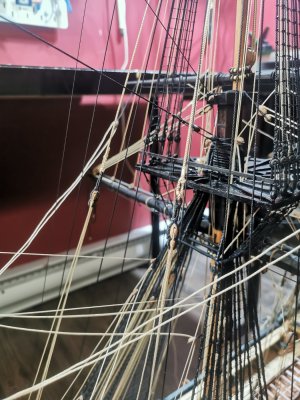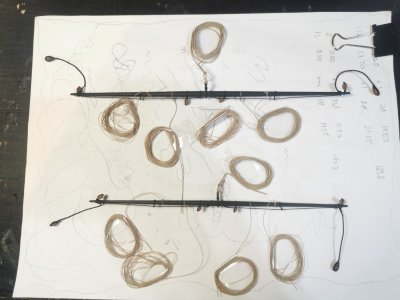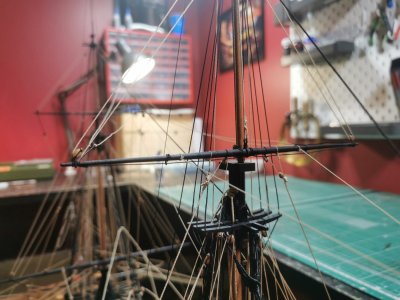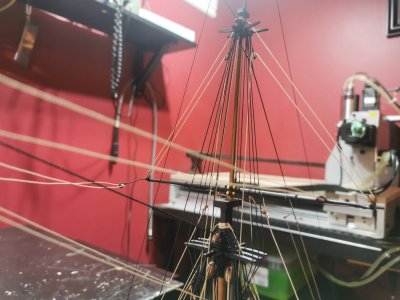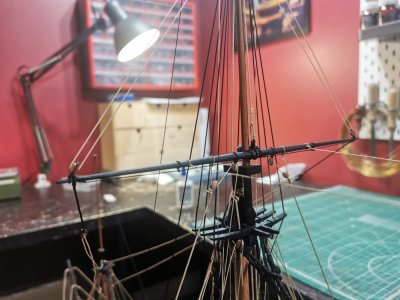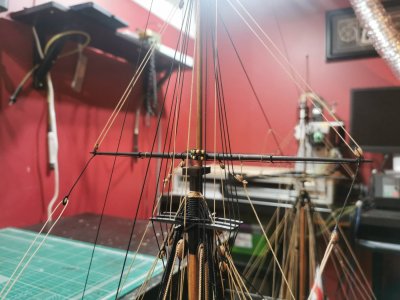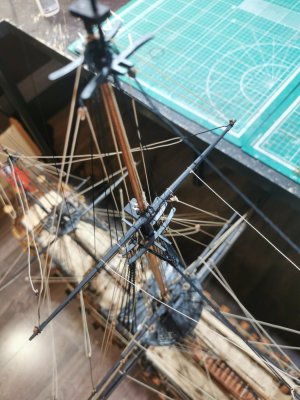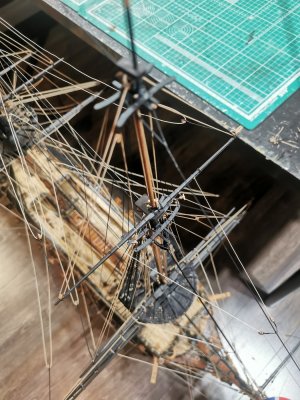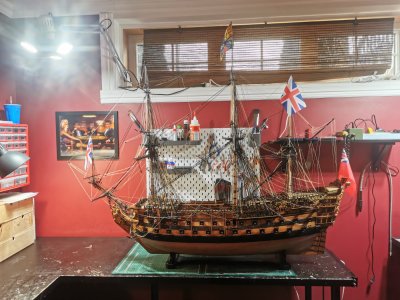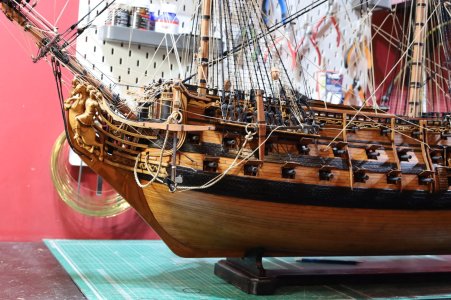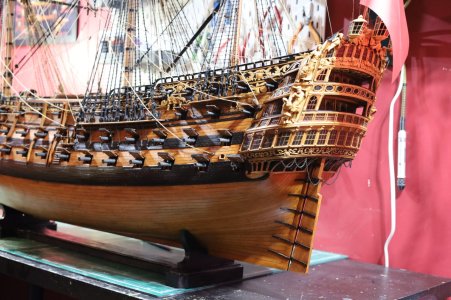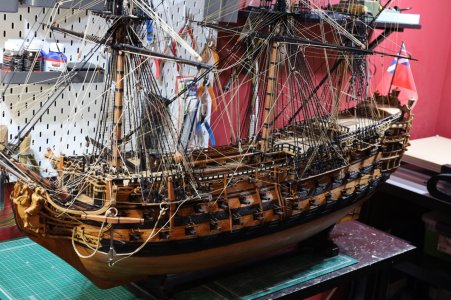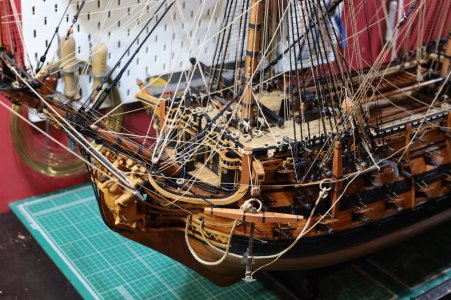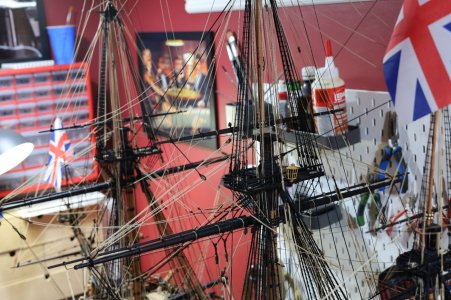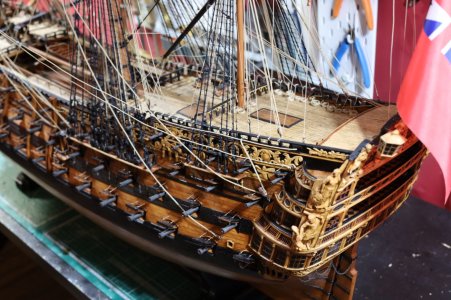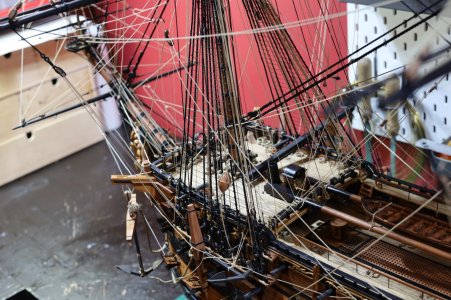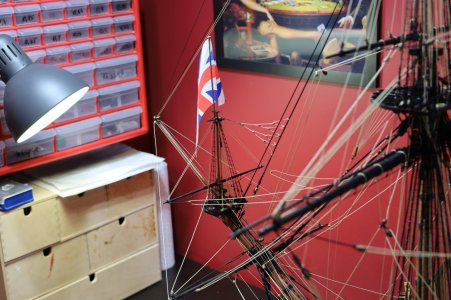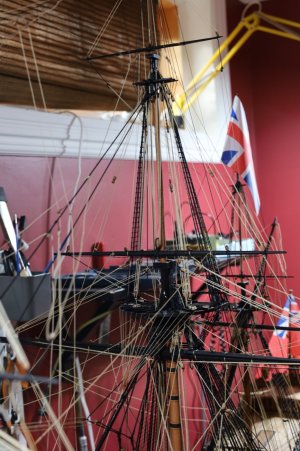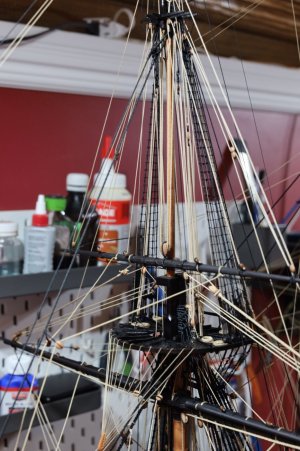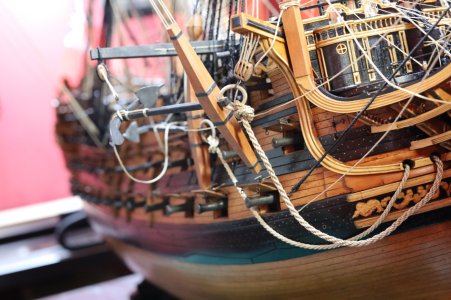- Joined
- Dec 19, 2022
- Messages
- 72
- Points
- 113

нет нет, ты не понял, в 17м веке бом-брамсель был очень маленьким, не имел брасов и шкотов, в сложеном виде крепился к брам-вантам, шкотовые углы крепились к брам-рею, топенант был скользящим, примерно как на фото, а у брамселя не было бык-горденейLifts (топенанты)? No, I don't think so. Topgallant lifts are on the photo, as usual. Royal sails? No, there should be no royal sails at this time, and there's no other attributes of these sails present.
Maybe it's leech lines, which didn't have blocks on the yard and went directly to the trestletrees? That's why they are directly attached to the yard on the model due to absence of sails (line bowlines)
View attachment 484341
no, no, you didn't understand, in the 17th century, the topsail was very small, had no braces and sheets, when folded it was attached to the shrouds, the sheet corners were attached to the topsail, and the top was sliding, about as in the photo
Last edited:





